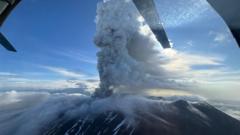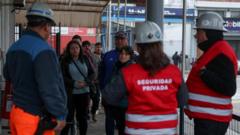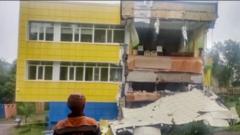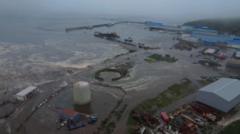A recent 7.7-magnitude earthquake in central Myanmar has raised concerns about safety in quake-active regions. Travelers to hotspots like California, Italy, and Japan are urged to prepare by utilizing technology, staying informed, and practicing safety measures.
Essential Safety Tips for Earthquake-Prone Travel

Essential Safety Tips for Earthquake-Prone Travel
After a tragic earthquake in Myanmar, experts share vital advice for travelers heading to earthquake zones.
On March 28, a catastrophic 7.7-magnitude earthquake struck central Myanmar, resulting in extensive destruction and claiming the lives of at least 3,500 individuals. The tremor's effects were felt far beyond its epicenter, leading to significant disruption in Bangkok, where buildings swayed and rooftop pools overflowed, as seen in viral videos. Although earthquake predictions remain elusive, popular vacation destinations such as California, Chile, and Japan lie in regions with seismic activity.
For those planning trips to these earthquake-prone areas, implementing safety strategies is crucial. Before traveling, it’s advisable to conduct thorough online research to understand the seismic history of the destination. Identifying the local agencies that issue disaster guidance and checking the availability of an earthquake early-warning system can significantly enhance safety. These sophisticated networks utilize sensors to detect tremors, allowing for timely alerts—essential given that even a few seconds can make a difference.
“Seconds matter in an earthquake,” emphasizes Sara McBride, a scientist at the U.S. Geological Survey Earthquake Hazards Program. She highlights a harrowing incident from Taiwan, where hospital staff successfully secured newborns as a powerful 7.4-magnitude quake unfolded, thanks to an early warning system.
Travelers can access notifications directly on their mobile devices through various apps like SASSLA (Mexico), SafetyTips or NERV (Japan), and MyShake (U.S.), which deliver real-time alerts. Additionally, signing up for the State Department’s Smart Traveler Enrollment Program and sharing an itinerary with friends can be life-saving moves, as disruptions caused by earthquakes can sever communication lines.
By staying aware and utilizing available technology, travelers can bolster their safety and preparedness when adventuring in areas vulnerable to earthquakes.




















